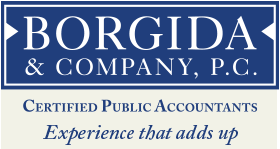The health care reform legislation that was recently enacted includes new taxes, but there are also some tax breaks available to help small businesses pay for health insurance. Two of the changes getting a lot of attention: a tax credit available to small businesses that offer health care coverage to employees, and a tax to penalize employers who do not offer coverage.
Small business tax credit
The new health-care reform legislation provides a tax credit to small businesses that offer health insurance coverage to their employees. The credit is available in two phases. For the years 2010 through 2013, the maximum credit is 35% of the employer’s premium expenses. For tax years 2014 and later, the maximum credit increases to 50%.
To be eligible for the tax credit, the following conditions must be met:
- An employer must have the equivalent of fewer than 25 full-time employees for the tax year. Generally, this is determined by dividing the total hours for which wages were paid for all eligible employees during the year by 2,080.
- Average annual wages must be less than $50,000 (to calculate, total wages paid during the tax year are divided by the number of full-time employees, and rounded down to the nearest $1,000).
- The employer must contribute at least 50% of the premium cost of a qualifying health plan offered to employees.
Special rules apply to seasonal employees and to tax-exempt employers. Also, sole proprietors, partners, 2% shareholders of an S corporation, and 5% owners of an employer generally are not considered employees for purposes of the credit. In addition, family members of ineligible employees are not counted as employees.
The maximum credit is available to qualifying employers with 10 or fewer full-time employees with average annual wages not exceeding $25,000. The credit is phased out for employers with between 10 and 25 full-time employees, and for employers who have full-time employees with average annual wages between $25,000 and $50,000.
Businesses applying for the credit in 2010 can include premium payments made prior to March 23, 2010, the date of enactment of the new health-care reform legislation. However, the total premium paid by the employer that’s eligible for the credit cannot exceed the average premium for the small-group market in the state where the employer offers health coverage. The average premium for each state is published by the IRS. The credit is claimed on the employer’s annual tax return as a general business credit.
Beginning in 2014, the maximum credit will increase to 50%; however, qualifying arrangements are restricted to health insurance purchased by the employer through a state-run health exchange. Additionally, starting in 2014, the credit can be claimed by the employer for only two years.
Penalty taxes encourage employers to offer coverage
While employers aren’t required to provide health care coverage to employees, a new excise tax will encourage them to do so. Beginning in 2014, a penalty tax will be assessed on employers who do not offer health care coverage to employees:
- The employer has 50 or more full-time employees (more specifically, an average of at least 50 full-time employees in the prior year, and part-time employees are factored into the calculation), and
- At least 1 full-time employee purchases health insurance coverage through a state exchange, and is entitled to a tax credit or cost-sharing reduction.
The tax is assessed on a monthly basis, and is equal to the number of full-time employees exceeding 30 multiplied by $166.67 ($2,000 divided by 12).
Even employers (those with at least 50 full-time employees) that do offer health-care coverage to employees may still face a tax penalty if at least 1 full-time employee purchases health insurance coverage through a state exchange, and is entitled to a tax credit or cost-sharing reduction as a result of:
- An employer’s coverage consisting of a plan that pays less than 60% of the total allowed cost of benefits.
- An employer’s coverage being considered “unaffordable” for an employee (generally, coverage would be considered unaffordable if an employee’s portion of the premium exceeds 9.5% of the employee’s household income).
In this case the tax, assessed on a monthly basis, equals $250 (one-twelfth of $3,000) for each full-time employee receiving a premium tax credit or cost-sharing subsidy through a state exchange. The tax is capped; however, at the amount that would be due if an employer did not offer health-care coverage to employees (i.e., the number of full-time employees exceeding 30 multiplied by $166.67).
Aaron L. Johnson, CPA



I can’t understand why you don’t have more people commenting on your blog. I really like what you have to say and intend to comment more often.
Excellently written article, I wish more bloggers offered the same level of content as you, the internet would be a much better place. Please keep it up!